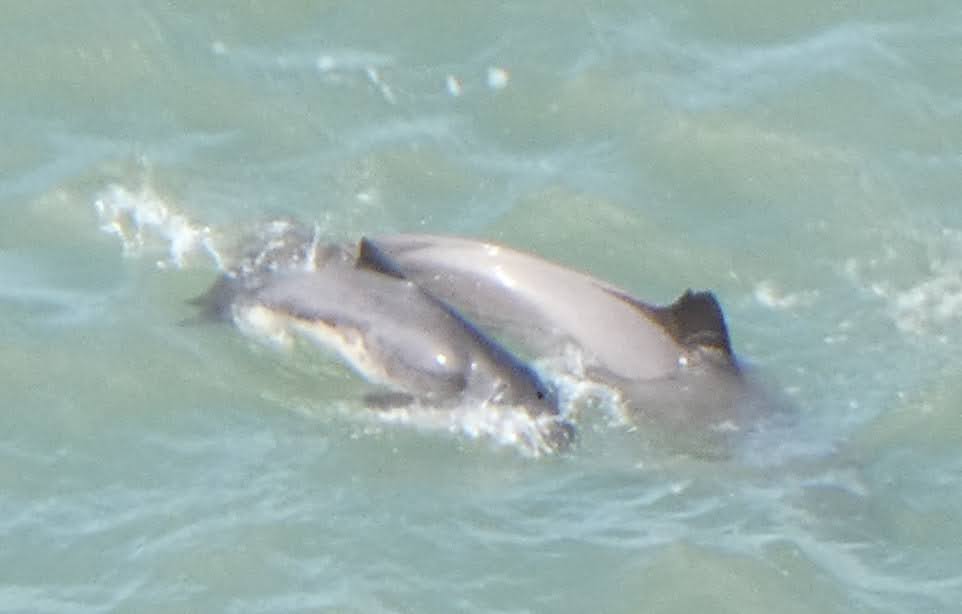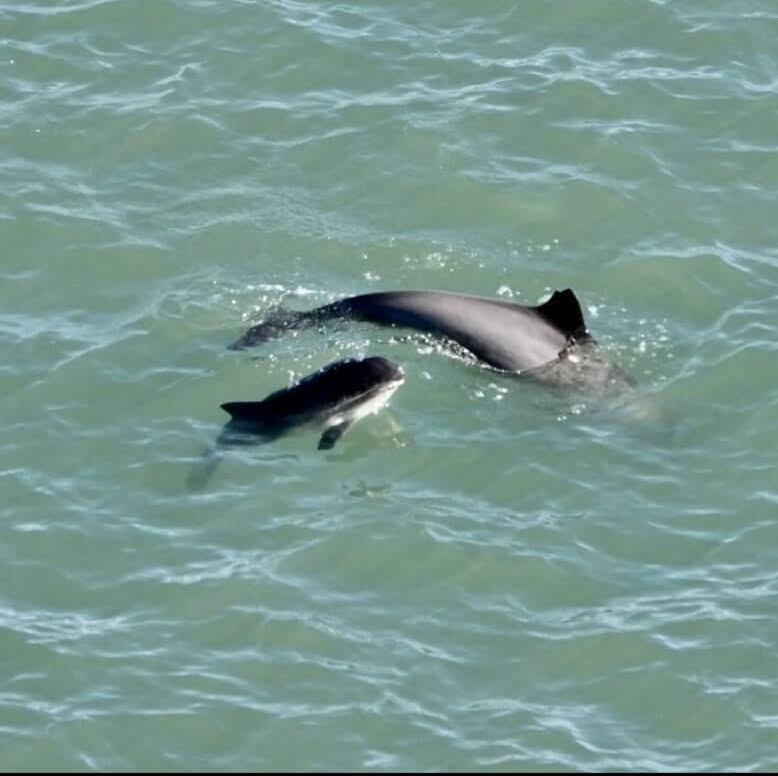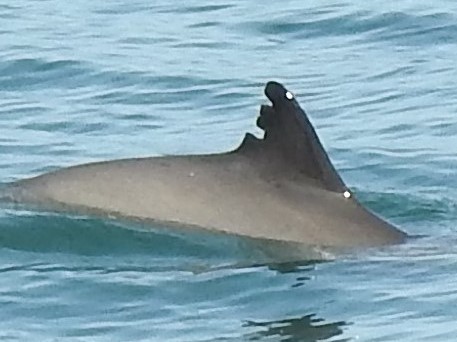During National Whale and Dolphin Watch 2021, Sea Watch Foundation joined up with Somerset Wildlife Trust to run their first Big Somerset Synchronised Marine Mammal Survey on Saturday July 31st. We had a total of 20 people surveying at 9 different locations all along the Somerset and north Somerset coast from Porlock to Portishead.
The forecast was quite changeable, and with a sea state of 3 verging on 4, the conditions were quite tricky to spot any small triangular fins of the harbour porpoise; the species most commonly seen along this coastline, rolling out of the swell.
The first sighting of the day was excitedly reported from Hurlstone Point at 11:15 of a sunfish, a species recorded at least once a year around the Exmoor coast in the summer months. At 12:10 a brief glimpse of a harbour porpoise was spotted at Porlock Weir heading east. For the remainder of the 2 hour watch no other confident sightings were recorded and those in north Somerset reported plenty of seaweed tricking the eye as it came in with the high tide!
Gareth managed to get some fantastic images and further investigation of the photos of the mother and calf pair revealed a distinctive notch on the top of the mother’s dorsal fin. A more exciting discovery was that Gareth noticed this matched a photo posted on Instagram (@somerset_sea_watching) back in July 2020. This means that this mother harbour porpoise has come back to the same area around Hurlstone Point to feed its calf. Our youngest volunteer, Indigo aged 3, has named the mother harbour porpoise ‘Wonder’.
It is possible that it is the same calf in both photos although, without several high quality photos it is difficult to see any distinctive markings that match. The calf in the photo from 2021 certainly looks larger and if a year older then it would have lost its foetal folds. It also has a bump on its side which although is not known what this is, and hopefully it is not harmful, it may be a good identifying feature for this individual in the future.
Photo-ID studies have been used extensively for species such as killer whales, humpback whales and bottlenose dolphins cataloguing individuals with distinctive markings on specific body parts depending on the species. However, individual markings on harbour porpoise are usually more subtle and due to their small size, cryptic colouration and subtle movements this makes them hard to spot let alone photograph. However, with advances in technology, land based photography can capture individual markings much more successfully and in high detail. In addition it provides a less-intrusive way of studying cetaceans.
Above are two other distinctive harbour porpoises with markings on their dorsal fin, one spotted at Hurlstone Point in 2018 and ‘Phineas’ from Capstone point along the north Devon coast in June 2021. So keep your eyes peeled!
More sightings and photo-ID could conclude that there is a resident population of harbour porpoise using the Somerset coast for breeding and feeding. However many more regular surveys and images are needed. If you feel you could spare some time and photography skills to help increase our knowledge and understanding of harbour porpoise population dynamics and their conservation, please get in touch to get involved!
If you want to join the next synchronized survey in Somerset, please click here to learn more about it!
By Vanessa Lloyd – Sea Watch Regional Coordinator






























